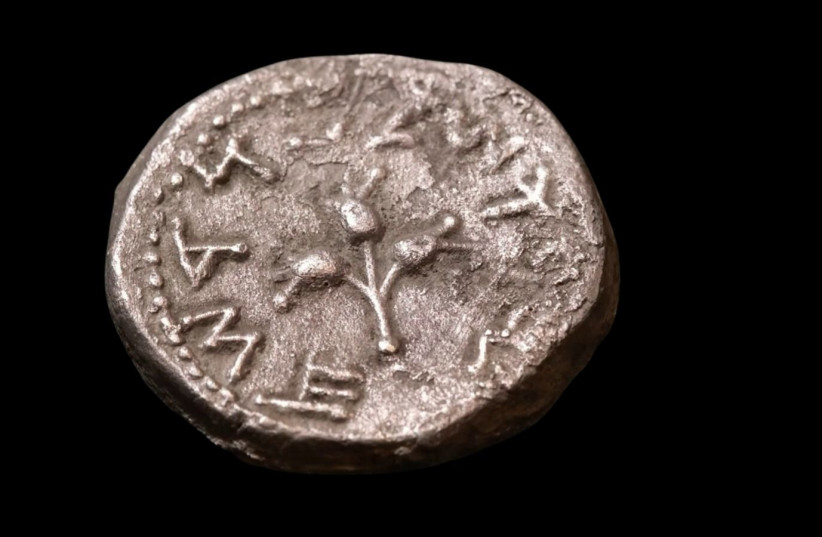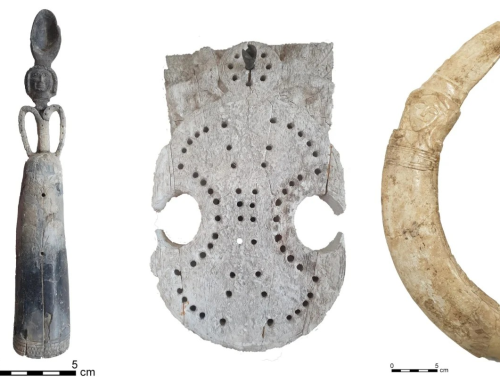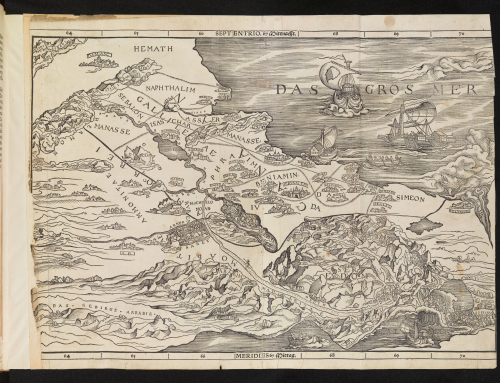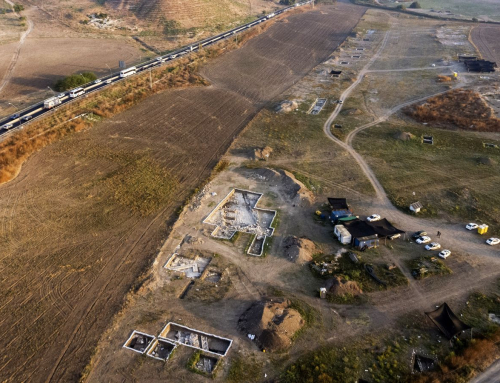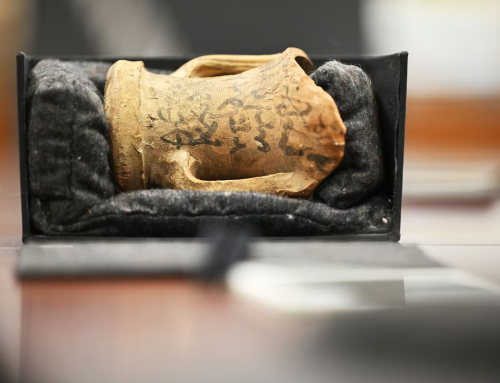A rare half-shekel silver coin from the first year of the First Jewish Revolt against the Romans about two millennia ago has been discovered in the Judean Desert. The rare coin, discovered in the area of the Ein Gedi nature reserve, had the words “The Holy Jerusalem” in ancient Hebrew on the coin’s face.
The coin, dated to 66/67 CE when the Second Temple was destroyed in Jerusalem, was found in the Judean Desert Survey led by the Israel Antiquities Authority together with the Heritage Ministry and the staff officer of the Civil Administration Archaeology Unit in Judea and Samaria carried out over the last six years with the aim of retrieving these ancient finds before the antiquity looters.
Recently, in the course of examining every cave and crack in the rock, Israel Antiquities Authority inspectors reached a cliff in a wadi near En Gedi when they came across the coin on the ground at the entrance of one of the caves.
One explanation for this find is that the Jerusalem-minted coin fell from the pocket of a rebel who escaped to the desert during the revolt – perhaps on his way to nearby En Gedi.
On one side of the coin, “The Holy Jerusalem” appears – the word “Holy” spelled without a vowel, reflecting the development of the writing on the coins that appeared later on in the Revolt as “The Holy Jerusalem” with the vowel. Three pomegranates are depicted on the center of the coin – a familiar symbol as it was adopted on the old Israeli lira coin that was currency in the State of Israel until 1980.
On the other side of the coin, a chalice (goblet) is depicted, above which the letter “Aleph” appears marking the first year of the outbreak of the Revolt and the value “Half-Shekel.” The chalice is a characteristic symbol on Jewish coins in currency towards the end of the Second Temple period.
Jew-rebels minted their own coins
These coins were minted in the values of shekel and half-shekel at the time of the First Revolt of the Jews against the Romans in Judea between the years 66 to 70 CE.
In line with the Torah commandment prohibiting the depiction of images, the Jews used vegetal motifs and cultic and religious symbols on their coins, while the pagan population depicted symbols such as animals and the portrait of the ruling emperors and the Greek language that was the common language employed at the time.
As part of the Jewish defiance, and the creation of an internal “Jewish Revolt economy,” the rebels minted their own silver and bronze coins depicting Jewish symbols.
The rebels decided to use the archaic Hebrew script that was current several hundred years earlier at the time of the First Temple Period instead of the Greek script that was used by the population in the country and the region at the time of the Second Temple.
The leaders of the Jewish Revolt decided to defy the rulers and to mint silver coins autonomously, using the Hebrew script and without the image of the ruling Emperor. It seems that the coins were minted in Jerusalem, possibly in the Temple area.
According to Yaniv David Levy, the Israel Antiquities Authority’s numismatic scholar, “coins from the first year of the Revolt such as this one, are rare. During the Second Temple period, Jewish pilgrims used to pay a Temple Tax in half-shekel coins.
For about 200 years, Tyrian-minted coins (tetradrachms from Tyre, which in the Roman Empire took on an unusual role as the medium of payment for the Temple tax in Jerusalem) made of fine silver and a status symbol in the region, were used for this contribution.
In the course of the revolt the rebels minted alternative coins inscribed with “Shekel Israel,” “Half-Shekel,” and “Quarter-Shekel” coins. It seems that the rituals in the Temple continued during the revolt and these coins were now used by the rebels.
Amir Ganor, a director of the Judean Desert Survey and Excavation Project noted that “the find of the silver Year-One half-shekel in the course of a controlled archaeological activity is a rare event in Israel and in the Judean Desert in particular.
This find emphasizes the importance of the controlled professional survey of the whole area. Every new find contributes to the history of the people and the country. Were it not for the survey, the coin may have been found by antiquity looters and sold on the antiquity market for the highest price offered. Over the six years of the project, we have recorded over 800 caves and have found thousands of significant finds.”
Heritage Minister Rabbi Amichai Eliyahu added that “the exciting discovery brings further evidence of the deep and indisputable connection between the Jewish people and Jerusalem and the Land of Israel. This amazing find is another strong sign of our people’s roots in the Land of Israel.”
Israel Antiquities Authority director Eli Escusido concluded that the discovery of the half-shekel coin is yet another gift that we have bestowed on the Israeli nation – first-hand evidence of a turbulent period in the history of our people 2,000 years ago, in a period of extremity and discourse that divided the nation and led to destruction.
After two millennia, we have returned to our country, and Holy Jerusalem is again our capital. The find of the coin at these times, is a reminder for us of what happened in the past, teaching us the importance of working towards unity.”
Original Article – Rebel Jewish coin dating to anti-Roman revolt discovered in Israel – The Jerusalem Post (jpost.com)

